#central st giles
Text
Was Jesus transgender?

Jay Hulme has written a fascinating thread about how theologians have understood the gender of Jesus. Even though no one thinks of Jesus as transgender in the modern sense, it is pretty clear that Jesus has been seen as crossing the gender binary.
Jay Hulme is a transgender poet, performer and education and you can find his web site here! Jay is currently Poet-in-Residence at ‘The Poet’s Church’, St Giles-in-the-Fields in Central London.

Recently there was some drama where news outlets got angry at a sermon which supposedly claimed Jesus was trans. Obviously the sermon did not say Jesus was trans - but it did touch on some fascinating (and very old) theology surrounding Jesus and gender. So let's talk about that.
God is not male
First I've gotta explain the Trinity... which is way too complex for twitter Suffice to say that God is not male (despite what you may have heard) and is in fact all genders and none simultaneously Jesus is God made flesh, God embodied as human. As a human man, yes, but also...
If you've been on Trans Twitter you'll have seen the "Jesus is trans" jokes. Saying his chromosomes had to be XX because he couldn't have got a Y from his Father. The meme about his side would being from top surgery But people have been playing with Jesus' gender for centuries
And the reason that people have been playing with Jesus' gender in art and theology and all that for centuries, is that Jesus gives us REASON to. So, of course, as we expand our understanding of gender in the modern world, we expand that to trans stuff too.
For all mankind
So lets talk about how, historically, the "Masculinity" of Jesus has been seen and considered, shall we?
So the whole point of Jesus is that he comes for ALL of humankind. We are told that we are all capable of, and supposed to work towards, being "christlike" - after all, Jesus is the embodiment of a genderless (or genderfull) God. The point is not that Jesus is a man, but a HUMAN.
And Jesus is clear about the fact that he didn't come as "a man" but "a human". So clear that all of the Gospel writers agree on it. In fact, throughout the Gospels Jesus never uses the word "anēr" (male/masculine) to describe himself. He always uses "anthrōpos" (human).
Jesus is the human incarnation of a God who is all genders and none, all at the same time; a God that has created each of us in their own image - all of us, of every gender - and therefore Jesus is not simply "male", but "human", and theologians have long recognised this.
Jesus as mother
Understanding that Jesus isn't merely "male", theologians have often described Jesus as a "mother" - most famously Julian of Norwich, who wrote in the 1300's, said: "Jesus Christ therefore, who himself overcame evil with good, is our true Mother."
Julian of Norwich also stated "The mother can give her child to suck of her milk, but our precious Mother Jesus can feed us with himself, and does, most courteously and most tenderly, with the blessed sacrament, which is the precious food of true life"
This idea of the sacrament as breast milk was not unique to Julian - many theologians drew the connection between these life giving things - even reflecting Rabbinic understandings of the Manna from Heaven as breast milk to create a long thread of understanding.
But one of the most "contentious" parts of the sermon that started this furore and started this thread is a particular (and long held) understanding of Jesus' side wound. Obviously, Julian has thoughts on that, too...
Julian says: "The mother can lay her child tenderly to her breast, but our tender Mother Jesus can lead us easily into his blessed breast through his sweet open side, and show us there a part of the godhead and of the joys of heaven, with inner certainty of endless bliss."
Jesus side wound
Medieval Christians were OBSESSED with Jesus' side wound. It was the highlight of artistic depictions, the focus of sermons, the content of visions. And one of the main things they saw it as, was some kind of portal...
And by "portal", I do, of course, mean vagina. And that's what the oh so contentious sermon said - "look, medieval christian art saw Jesus' side wound as a vagina. Let's talk about that."
The idea is that Jesus gives life. Like a mother giving birth. Jesus raising Lazarus from the tomb, Jesus himself rising from the tomb, they both involve the miraculous drawing out of human life from a dark cave, along a tunnel, and into the light. Sounds a lot like childbirth.
We say that Christ died so that we could live. The Bible says it a lot. Many theologians, living in a time where death in childbirth was common, and childbirth itself could be horrifically painful drew the connection between Christ's physical death on the cross and childbirth.
Theologians saw Jesus' agony on the cross as a form of 'labour' as he 'birthed' new life for all of us. And so, when the soldier pieced his side, proving he was dead, and "blood and water" came out, they saw that as the moment of 'birth'. Like blood and water come in childbirth
With that in mind, when an opening in a body brings forth water and blood, and in the midst of that water and blood comes new life... it's fair to think of it as a vagina. So medieval artists, depicting that moment, depicted Jesus' side wound as such. It was a thing.

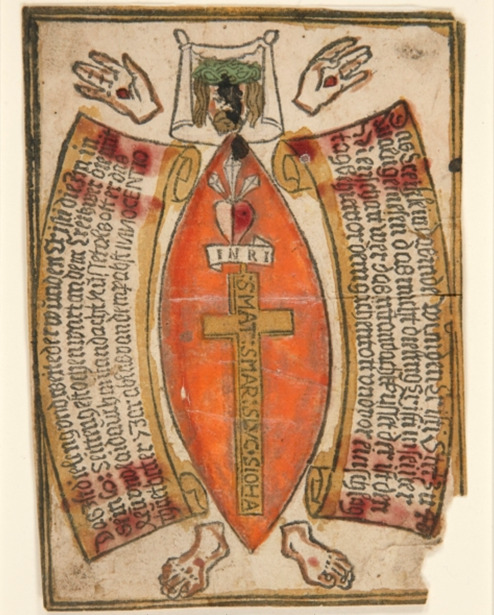

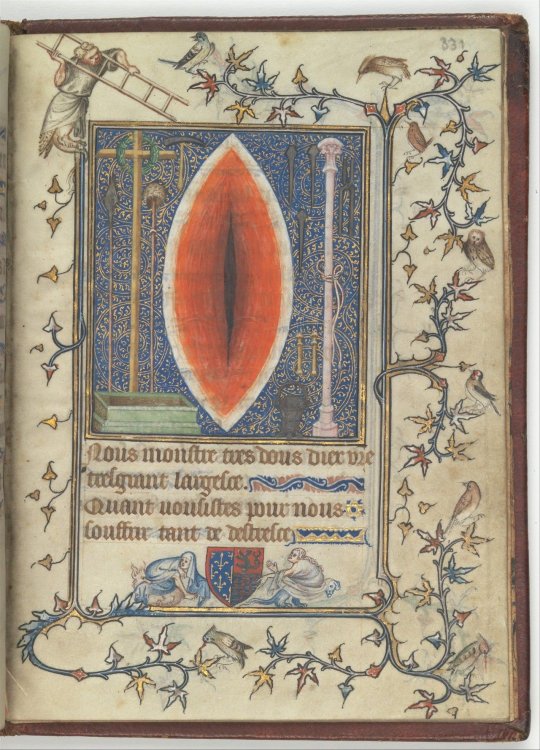
The femininity of Jesus
There's also all the theology that surrounded Jesus' actions: theologians living in times of strict gender roles obsessed over the "femininity" of Jesus feeding and serving others. Even speaking to women as if they were equal. Of him taking the "feminine role" in his interactions
But this thread is already very long...
In summary: If you think it's heresy to see Jesus as "feminine" or "mother" or anything other than a masculine macho manly man, you're wrong. And if you think it's "modern woke nonsense", then you've not been paying attention to centuries of theology, or the Gospels themselves.
One day I'll do a whole thread on how it actually is Big Trans Vibes for God to shrink down to a single "gender" and body to walk among us as Jesus, and how weird that must have been for Jesus to suddenly be "male" and not "the genderweird vibe of God" but that's for another time
Ppl have been going BUT WHAT ABOUT 'THE SON OF MAN' and my friends, the earliest Gospels we've got are Ancient Greek and Luke 9:22 says "υἱός τοῦ ἀνθρώπου" υἱός is often translated as "male child" but regularly applies to female children ἀνθρώπου means "human / humanity"
Full twitter thread here!
Photo from the Norwegian play Jesus, the Queen of Heaven, where the Norwegian transgender pioneer Esben Esther Pirelli Benestad played Jesus. Photo by Fin Serck-Hanssen.
#trans#transgender#queer#lgbt#lgbtqa#jesus#theology#gender theology#christianity#essential#history#religion
735 notes
·
View notes
Text
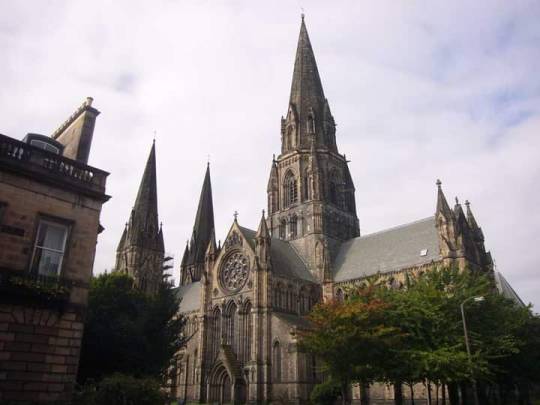
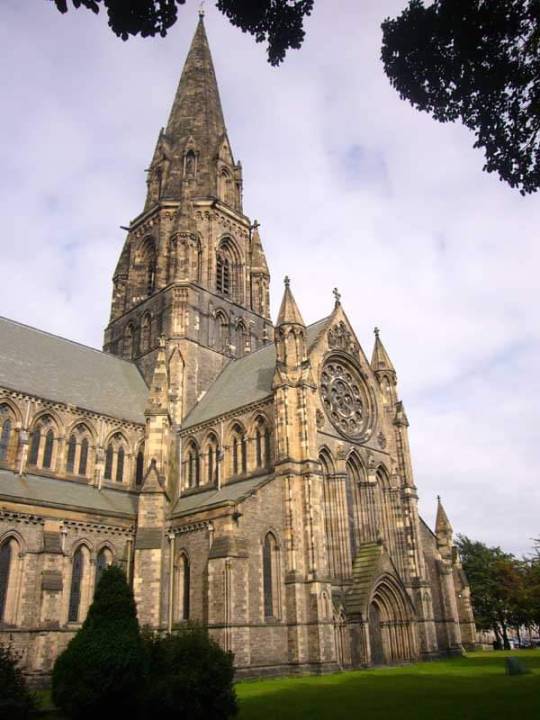


On October 29th 1879 a service of consecration was held at the newly completed St Mary's Episcopal Cathedral in Edinburgh.
At the "glorious" revolution in 1688, the Scottish bishops and supporting clergy were ejected as non-Jurors because they refused to swear an oath to William of Orange, choosing instead to support the supplanted King James; so the established church in Scotland was handed over to Presbyterian governance. St Giles in consequence became once more the “High Kirk” of Edinburgh. The ejected Episcopalians, because of their Jacobite leanings, became subject to severe penal laws until 1792. After this they were free, largely to develop as they could. Gradually their obscure meeting houses gave place to churches, but for many poverty-stricken years there were no cathedrals in the seven dioceses of Scotland. In particular, in the Diocese of Edinburgh other churches were used as the “pro-Cathedral” until St Mary’s was completed in 1879, it took five years to build.
Barbara and Mary Walker left the whole of their property to the Episcopal Church in Scotland, thus enabling the building of a Cathedral which was to be dedicated to St Mary the Virgin, and also setting up trustees to endow the Cathedral and to set up grants in aid of other church work.
An architectural competition was arranged. Amid controversy, including accusations of plagiarism and favouritism from six competing designs, three from Scottish, three from English architects. That of the English Sir George Gilbert Scott was chosen with plans submitted under the clever anonymous motto, “Auld Lang Syne”. The foundation stone was laid on 21st May 1874 by the Duke of Buccleuch and Queensberry, and the building consecrated on 30th October 1879. The cost was £110,000, but rising wages forbad the completion of the Chapter House and western spires. The former was added in 1890 at a cost of £5,000, the latter by church people in memory of the founders during 1913-17 at a cost of £13,200.
The style of Scott’s design for the Cathedral was inspired by the early Gothic churches and abbeys of Scotland. He gave it as large a floor space as the site would allow and made the massive central tower and spire and the twin western spires such prominent features that they may be seen from miles away. The enormous weight of the central tower is carried on four main pillars and spread through diagonal arches into buttresses in the outer walls, leaving unusually open views inside.
Whereas you can see the spires of St Mary's from any elevated position in Edinburgh, the close confines of the New Town means it is hardly visible from surrounding streets, except the wide vistas of Melville street, which is a shame, I think it is not visited as much as other City attractions, it is well worth a visit, and if you are after an early start on a tour of Edinburgh the Cathedral opens its doors at 7.30 each morning, it can be eerily quiet at that time and I would say is the best chance to grab pics without other tourists around getting in your shots.
My highlight inside is the modern stained-glass windows by Eduardo Paolozzi, "inventor" of the Pop art movement as seen in the pics.
28 notes
·
View notes
Text
Bravado on the gallows
[abridged excerpt from V.A.C. Gatrell's The Hanging Tree: Execution and the English People 1770–1868, Chapter 1.1: “Dying Bravely”, emphasis mine]

the most iconic depiction of a procession to the Tyburn gallows, with the condemned on a cart going through excited crowds: William Hogarth's The Idle 'Prentice Executed at Tyburn, from the Industry and Idleness series (1747)
In theory, a Londoner growing up in the 1780s could by 1840 have attended some four hundred execution days outside Newgate alone. If he was unimaginably diligent he could have watched 1,200 people hang (and there were such obsessives). The sanction of the gallows and the rhetoric of the death sentence were central to all relations of authority in Georgian England. But the gallows were also embedded in the collective imagination, the subject of anxiety, defence, and denial, of jokes, ballads, images, and satire, and of primal gratifications too.
Even today we take comfort from an exuberant and cheering fantasy of what public hangings were like, and hence blur the memory of what the noose really did to people. A pleasant myth shields us from the reality of the process. It is not that the myth was without basis. It is what it concealed that is in question.
Central to the fantasy is the memory of the felon’s procession to Tyburn before 1783. To surface appearances it all seems rather jolly, and in certain dark senses it was so:
As clever Tom Clinch, while the rabble was bawling,
Rode stately through Holborn, to die in his calling;
He stopped at the George for a bottle of sack,
And promised to pay for it when he came back.
– J. Swift, ‘Clever Tom Clinch going to be hanged’ (1726/7)
From Newgate prison the condemned were conveyed in open carts along Holborn, St Giles, and Tyburn Road (later Oxford Street) to the triangular gallows at the foot of the Edgware Road. The major stations in this parodic progress to Calvary were at inns like the Bowl on the corner of St Giles’ High Street, or the George in Holborn, where the condemned would be offered wine; then Tyburn itself; and then again at Surgeon’s Hall at the Old Bailey, where murderers’ bodies were displayed and dissected.
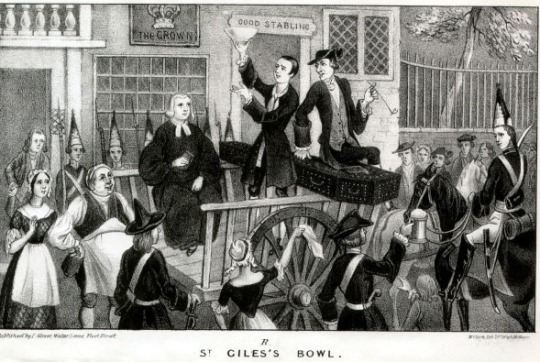
Thief, escape artist, and folk hero Jack Sheppard taking his last drink at St Giles
Playing as best they could to the crowd’s admiration and engaging in parodic dialogue with it, some felons on their way to their doom constructed the illusion that they were the masters of the ceremonies, and not the City marshal, under-sheriff, priest, constables, and javelin-men who were meant to impart solemnity and security to the procession. Lord Ferrers’s composure on his journey to Tyburn in 1760 ‘shamed heroes’, Horace Walpole reported. Hanged for murdering his servant, he bore the procession ‘with as much tranquillity as if he was only going to his own burial, not to his own execution’. Plebeians also put on fine displays:
The vilest rogues, and most despicable villains, may own a thousand crimes, and often brag of the most abominable actions; but there is scarce one, who will confess that he has no courage... The further a man is removed from repentance, nay, the more void he seems to be of all religion, and the less concern he discovers for futurity, the more he is admired by our sprightly people.
– B. Mandeville, An enquiry into the causes of the frequent executions at Tyburn (1725)
When Lewis Avershaw was hanged on Kennington Common in 1795 he appeared ‘entirely unconcerned, had a flower in his mouth, his bosom was thrown open, and he kept up an incessant conversation with the persons who rode beside the cart, laughing and nodding to acquaintances in the crowd’. He was afterwards hanged in chains on Wimbledon Common, and ‘for several months, thousands of the London populace passed their Sundays near the spot, as if consecrated by the remains of a hero’. ‘Sixteen-string’ John Rann in 1774 wore a peagreen coat, a nosegay in his buttonhole, and nankeen small-clothes tied at each knee with sixteen strings. At the gallows he sustained the demeanour of his last dinner-party in Newgate, where the company had included seven of his girls and ‘all were remarkably cheerful’. Thanks to the crowds and the convivial exchanges en route, a popular daredevil like this might take two hours to travel the couple of miles to his Tyburn death.

The Newgate Drop in action, 1809
Nor did this festive tradition die when the scaffold was removed to Newgate’s exterior in 1783. At Holloway’s and Haggerty’s hanging in 1807 both men ‘conducted themselves with the most decided indifference’. Holloway ‘with an affected cheerfulness of countenance... jumped upon the scaffold when he had ascended the ladder, his arms being pinioned with a rope behind... got his hat between his two hands, and as well as he was able, bowed to the crowd repeatedly... with a view to show that he died game, as it is expressed.’ He announced his innocence, refused to pray, and told Haggerty to ignore the clergy-man. Ascending the Newgate scaffold in 1829, Thomas Birmingham ‘was instantly greeted by a vast number of girls of dissolute character in the mob, who called out repeatedly—“Good bye, Tom! God bless you, my trump!” In the 1830s the ballad of the condemned Sam Hall conveyed the tone of these scaffold exchanges:
I saw Nellie in the crowd,
And I hollered,—right out loud—
‘Say Nellie, ain’t you proud—
Damn your eyes’ .
These mocking postures were mainly metropolitan but not exclusively so. Before his execution at York in 1739, Dick Turpin employed five mourners to follow his cart to the scaffold.
Self-parody and the display of courage was one way of dealing with terror. Defiance was another. An agricultural worker executed in Kent for arson during the Swing disturbances in 1830 declared his innocence to the last and ‘refused to pull the cap down over his eyes, saying he wished to see the people’ as he died. Others spurned God and his priests. When the highway robber Norton died game in 1827 he refused religious consolations. When a schoolmaster in Newgate sought to persuade a condemned man that there was a future life, the reply got to the truth of it: “Why you too gammon on as well as the parson! They take your life away, and then they think to make amends by telling you of another and a better world; for my part I am very well satisfied with this, if they will let me stay in it.’

Thomas Rowlandson, Malefactors on Their Way to Tyburn (c. 1776–1827)
Then there was the determined care about dress. Best clothing was worn by those who could afford it. Few men now dressed as Lord Ferrers had in 1760, in his wedding suit of white and silver, or paraded symbols like the white cockade the burglar Waistcott wore in his hat in 1759 ‘as an emblem of his whole innocence’. Male dress was becoming sober. Hatfield wore a black jacket with waistcoat, fustian pantaloons, and white cotton stockings; Fauntleroy ‘a new suit of black, silk stockings of the same colour, and light pumps’. But women continued to affect sartorial gaiety. Elizabeth Fry found that the ‘chief thought’ of nearly every condemned woman in Newgate ‘relates to her appearance on the scaffold, the dress in which she shall be hanged’. When Christian Bowman was hanged and burnt outside Newgate in 1789 she was ‘drest in a clean striped gown, a white ribbon, and a black ribbon round her cap’. In 1815 Eliza Fenning wore the dress she was to have worn for her wedding, a ‘white muslin gown, a handsome worked cap, and laced boots’.
Striking in all this is the victim’s effort to maintain dignity to the last and to die well, by drawing on a supportive vein of cynicism which ran deep in popular culture. Also striking is the authorities’ tolerance of these efforts. Those with money could spend their last days in Newgate in dissipation, as John Rann did, along with the highwayman Paul Lewis in 1763 when he entertained guests in the condemned cell by singing bawdy songs and vilifying the parson. On the scaffold likewise, custom had long entitled the condemned to address the crowd as they pleased, seditiously if they chose. Although every effort was made to force them to public professions of guilt and penitence, they were not checked if they betrayed that role. Jacobites had betrayed the role spectacularly, some making seditious speeches ‘plainly calculated’, as Dudley Ryder had observed, ‘for nothing else but to incense the people against the government... A rogue cannot be hanged but he must become a saint upon the gibbet.’

Dr Johnson lamented the abolition of the Tyburn procession: ‘the old method was most satisfactory to all parties; the publick was gratified by a procession; the criminal was supported by it. Why is all this to be swept away?’ This comment is usually taken to indicate bluff Augustan heartlessness. But its key word was ‘support’, and the generosity of Johnson’s observation is clarified in Adam Smith’s amplification of it:
A brave man is not rendered contemptible by being brought to the scaffold. The sympathy of the spectators supports him, and saves him from that shame, that consciousness that his misery is felt by himself only, which is of all sentiments the most insupportable... He has no suspicion that his situation is the object of contempt or derision to any body, and he can, with propriety, assume the air, not only of perfect serenity, but of triumph and exultation.
Johnson’s and Smith’s insights take us at last beyond the jolly surface of these rituals to the bleaker truth which social memory has censored—that most felons went to their deaths in quaking terror. In this light the abolition of the procession and the long shift towards the privatization of execution, commonly understood as a progressive and humane movement, was the reverse of that. To kill felons without ceremony and in private was to deny them the only worldly support they could hope for in their last hours. As evangelicals had their cool say on the best chances of bringing the felon to penitence, the felon was to be left alone with his death, that his spirit might break. [n.b. The author does have a point here (it’s truly horrible to die all alone, without an audience and without your loved ones, at the hands of cops, priests and bureaucrats), but this take ignores that the crowd’s support was not a given; for some they cheered, but for others they cursed, heckled, mocked, threw mud etc]
While public executions lasted, many knew that outward bravado did not speak for a felt reality, and that the powdered wig, Holland shirt, gloves, and nosegays which some flaunted on their last journey was the only resort they had to ‘meliorate the terrible thoughts of the meagre tyrant Death’. The man who did contrive to conduct himself bravely was often actually drunk out of his mind:
But valor the stronger grows,
The stronger liquor we're drinking,
And how can we feel our woes,
When we've lost the trouble of thinking?
— V.A.C. Gatrell, The Hanging Tree: Execution and the English People 1770–1868 (Oxford University Press, 1994)
#V.A.C. Gatrell#theory#swinging from the gallows tree#The Hanging Tree: Execution and the English People 1770–1868#the potatoes of defiance#england#london#I love it when I abridge excerpts#and they're still 17 screens long
35 notes
·
View notes
Text

12 September 2022: The day she made history
The Vigil of the Princes is a tradition that started nearly a century ago with the death of King George V. King Edward VIII, Prince Albert (Duke of York and future King George VI), Prince Henry (Duke of Gloucester, and Prince George (Duke of Kent) stood vigil over their father’s coffin in Westminster Hall in January 1936.
When the vigil was performed in 2002 at the Queen Mother’s lying in state, four members of the royal family took part. Her four grandsons- Prince Charles (Prince of Wales and future King Charles III), Prince Andrew (Duke of York), Prince Edward (Earl of Wessex), and David Armstrong-Jones (Viscount Linley and 2nd Earl of Snowdon)- stood vigil over her coffin for twenty minutes. Although they did not take part in the vigil, both Prince William and Prince Harry were present.
On the evening of September 12th 2022, the four children of Queen Elizabeth II took part in the tradition at St. Giles’ Cathedral, standing vigil over their mother’s coffin for twenty minutes while members of the public paid their respects. It was a historic moment, as Princess Anne was the first female royal to take part in the tradition. (Royal Central, "Who will keep vigil at Queen Elizabeth II’s coffin as it lies in state?")
119 notes
·
View notes
Text
The Sunnydale Herald Newsletter, Sunday, March 3rd - Monday, March 4th
WESLEY: This world must be a terrible disappointment to you.
ILLYRIA: Grievous.
WESLEY: I'm not too impressed with it myself.
~~Underneath~~
[Drabbles & Short Fiction]

On the Other Paw by madimpossibledreamer (Assassin's Creed crossover, pre-Shaun/Xander, Teen)
The Fire Within by veronyxk84 (Spike, Buffy/Spike, PG-13)
Cure-All by veronyxk84 (Spike, Giles, PG-13)

Присоединяйся and other Buffy/Angel ficlets posted by B_E_S (G and T ratings, in Russian)
Helen of Troy - 1753 by Empire_of_the_Words (Angel/Darla, T)
love on the weekend by threefourtango (Giles/Jenny, Explicit)
Those Left Behind by Luna_delCielo (LotR and Silmarillion crossover, Buffy/Finrod Felagund, G)
Immaculate by vampbrat (Spike/Angelus, M)
Redemption Act by NAOA (Faith, T)
Mending Words and Making Mistakes by NAOA (Giles & Wesley, Roger Wyndam-Pryce, G)
Hidden Princess by Vathara (Sengoku Nights crossover, Buffy, T)
Meeting The by Evil_Little_Dog (Buffy, Connor, Angel/Buffy, Angel/Darla, G)
Love in Chains by Pinkperson (Buffy/Angel, T)
Calling by Coraniaid (Buffy/Faith, T)
historians by softestbutch (Buffy/Faith, T)
Better Than Good by MadeInGold (Angel/Oz, G)
Une Question De Point De Vue by PtiteMac (Buffy/Giles, T, in French)

Untitled Spike x reader story by evieelyzabethh (not rated, cw blood and blood loss)

From Wrecked to Gone by Lilacsandorangeblossoms (Buffy/Spike, PG-13)

Horrible day by Lilacsandorangeblossoms (Buffy/Spike, R)
Fortune Cookie Epiphany by Slaymesoftly (Buffy/Spike, PG-13)

Untitled Giles drabble (Giles glanced at Willow's laptop...) by NotASlayer (not rated - T?)
[Chaptered Fiction]

The Dawnster Drabbles - Chapter 1-4 by Passion4Spike (Dawn, Buffy/Spike, T)
A Slice of Cherry Blossoms - Chapter 1-4 (COMPLETE!) by MCorey1317 (Buffy/Angel, Explicit)

In Your Dreams, Ch. 1 by Geliot99 (Buffy/Spike, NC-17)
Tales of the Sea, Ch. 1-2 by DeamonQueen (Buffy/Spike, PG-13)
[Images, Audio & Video]

Two new story banners by veronyxk84 (Buffy/Spike, worksafe)

Drawings: cordy n angel both have tattoos…. by artsying-ifer (worksafe)
Drawings: Buffy, Willow, Tara, Spike, Angel by baleful-blurbs (worksafe)
Spike by mintcakeart (worksafe)
Faith gifset by andremichaux (worksafe, some blood)
A newly Illyriad Wes by genericaces (worksafe)
Manip: “Someone You Loved” by itslilahhere (Wesley/Lilah, possibly NSFW)
Willow meme manip by spar1axkilla (worksafe)

the season 6 promo is the most badass thing ever so I had to paint a rendition of it by jamieejamss (Buffy, worksafe)
[Reviews & Recaps]

Hush by st-just, centrally-unplanned
Halloween by inconsistentlywrittensoul
Season 1 Rewatch The Witch by spuffybot
Buffy Season 1 Rewatch Teachers Pet by spuffybot
Buffy the Vampire Slayer (1992) Whedon's Version - Part 1/3: Changes to the Script and Story by sunnydalestudies
what a shit job season 7 did of building the tension by angelthemanspanker

Controversial opinion - The Body is overrated (cont'd) by thetopher, Plasma

I’m sure this has been asked before, but who’s got your vote for best actor and why? by funishin

Lessons S7 E1 (Buffy and the Art of Story Podcast) - Lisa Lilly
Episode 18 - Moonshine, a Sloe Gin Fizz, and Shoes (Reptile Boy) | The Sunnydale Diaries - A Buffy the Vampire Slayer Podcast
[Recs & In Search Of]

mklauber is looking for a specific fanfic (Xander takes Buffy to a cabin to detox from drugs)
[Fandom Discussions]

i could fix connor ats by all-seeing-ifer, justafriendofxanders, greensword101
Spike’s curly hair in late season 5/early season 6 shouldn’t have been because... by aphony-cree
The perfect job for Buffy is firefighter by aphony-cree
the little bits of accidental world-building related foreshadowing by coraniaid
Re: do you know if Dawn is ever brought up on Angel? etc. by coraniaid
The only thing more powerful than the Buffy writers’ reluctance to give screentime to a woman over the age of thirty... by coraniaid
1 of the many things that I love about The Gentlemen by spidey-loving-starkid
[the scoobies putting up the dozens of potentials in buffy's house is so funny. do they know angel lives in an empty hotel] by angelthemanspanker
I like how Illyria used it pronouns before it got reborn in Fred by angelthemanspanker
Further buffy s7/angel s4 crossover thoughts (what would be the last straw for Angel's hospitality?) by angelthemanspanker and justafriendofxanders
btvsverse characters mario kart choices (real) by buffysbitca
Re: I always got the impression Illyria was a he/him in their original god king form... by genericaces
Drawings and thoughts about a s5 au: Lindsey bonding with Gunn by genericaces
Get yourself a Pike by hare-majesteit-aurelius

Gunn was mandated by the Network (cont'd) by Kendar, Plasma, AlphaFoxtrot

Willow's revenge by The Whirlwind and others
Are there any vampires besides Spike who would ever seek out a soul? by The Whirlwind, Stoney, vampmogs and others

Would this be a better or worse way of handling Connor in your opinion? by Capital-Shake-313
Religion in Buffy by Cha0sCat and others
If Buffy had aired on a network like HBO, which scene(s) do you think would be darker in tone or more graphic? by funishin
When is each character at their best appearance (hair style, dress, etc.)? by jonaskoelker
Plan for Spike by Icy-Morning6813
Tell me your favorite wholesome moment! by Sudden-Star-7190
Hellmouths not on Earth? by DifficultRice7075
[Articles, Interviews, and Other News]

Did anyone else notice that Buffy and Angel are on Disney+ in the U.S. now? via eddyx

Luke Perry and the Untold History of ‘Buffy the Vampire Slayer’ | Vanity Fair
Submit a link to be included in the newsletter!
Join the editor team :)
6 notes
·
View notes
Photo

Lost London: Walking the Covent Garden Drainage Ditches
Part 2: The Cock and Pye Ditch
Up until the 17th Century, St Giles-in-the-Fields was just a small group of houses in the grounds of a leprosy hospital; between these dwellings were marshy fields known, perhaps unimaginatively, as Marshland, surrounded by a rectangular drainage ditch. These fields were covered by the development known as Seven Dials in the 1690s, and the fields and ditch would in time take on the name of Cock and Pye – the origin of which will become clearer as the walk along this lost watercourse continues.
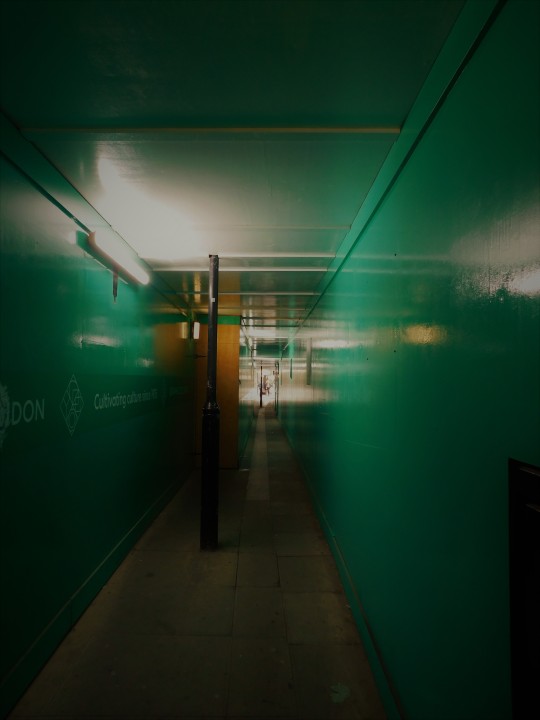
The route from Drury Lane to Seven Dials requires a walk through an unnamed and (at time of walking) well-enclosed alleyway, leading onto Shelton Street. My guidebook says a small gradient can be found on this road where the subterranean waters of the Cock and Pye flow towards the Bloomsbury Ditch, but this is somewhat difficult to detect.
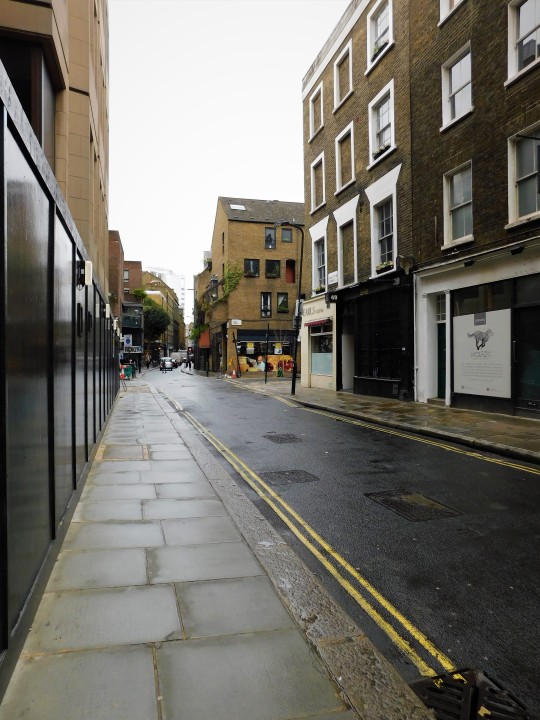
At the junction of Shelton Street and Neal Street, my walk turned right, in order to follow the eastern edge of the Cock and Pye’s rectangular outline (the ditch also continues straight ahead, so the circuit could in theory be completed in either clockwise or anticlockwise fashion). Neal Street takes it name from Thomas Neale (forgetting the last “e”), the Stuart courtier who was responsible for the development of Seven Dials.
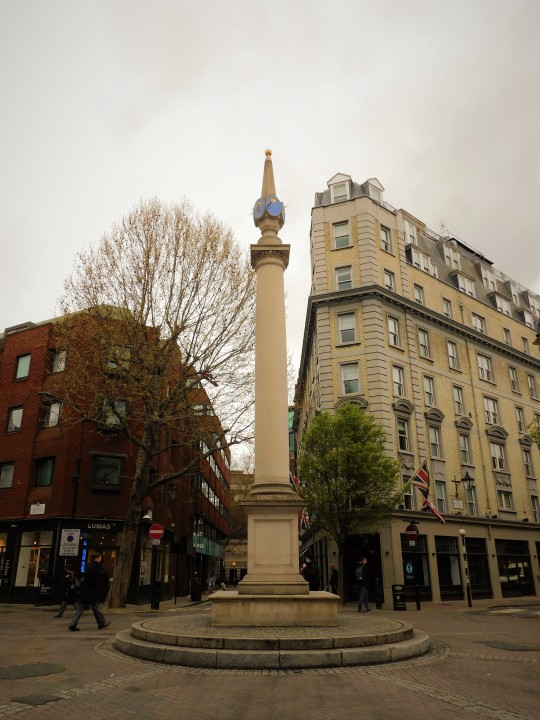
As Neal Street is fairly typical of the area – expensive shops and pricey bars, cafés, and restaurants – a diversion to the centre of Seven Dials is recommended. Here, the seven roads radiate out from a central column, which surprisingly only has six sundials; the central column and surrounding roundabout functions as the seventh. The original column was erected as part of the initial development, though was taken down in 1773; the story that it was pulled down by a mob looking for gold rumoured to be buried beneath it are just an urban legend. The current column is a replica installed in the 1980s.

Turning back to Neal Street, the route then turns left at Shaftesbury Avenue. It is hard to imagine that the surrounding streets here were once the infamous Rookery of St Giles, some of the worst slums in the country. During the 18th Century, at the height of the gin craze, the squalid conditions of the streets of St Giles inspired Hogarth’s etching Gin Lane. Nowadays the most prominent artwork on Shaftesbury Avenue is Drama Through the Ages, a frieze on the Odeon cinema, originally the Saville Theatre. Very few traces of the Cock and Pye Ditch are left, though a small grate at the junction of Shaftesbury Avenue and Mercer Street reveals trickling water below.

The third side of the rectangle is completed by walking along West Street, apparently so named because it was the western boundary of the Cock and Pye fields (a convention not applied to the other three sides though). At the time of walking, the Ambassadors Theatre was also running a rather appropriately named play; its more famous neighbour, St Martins Theatre, has meanwhile been showing the same play, Agatha Christie’s The Mousetrap, for 70 years.
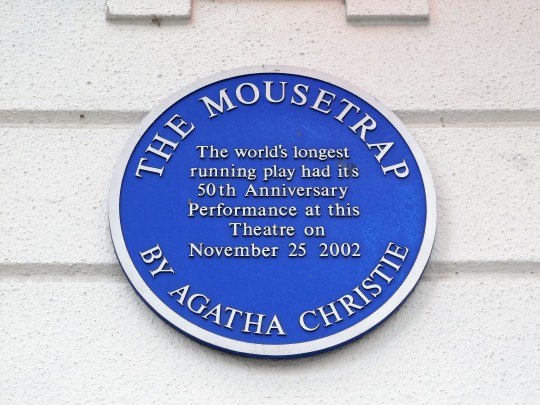
We shall end this section of the walk where West Street meets Upper St Martin’s Lane. It was in this vicinity that the Cock and Pye Inn once stood, and gave its name to the surrounding fields and ditch. Some say that the inn gained its name from serving elaborate peacock pies, though more likely it was simply named after a cock and a magpie – at the time, spelt magpye.
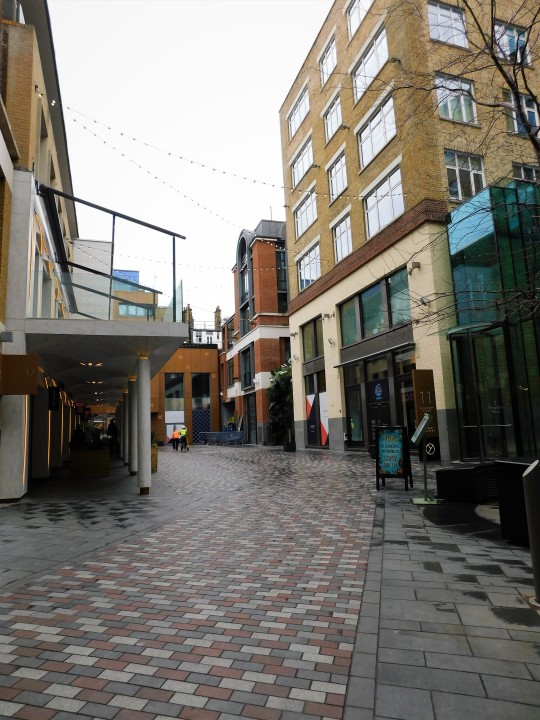
#london#uk#england#walk#covent garden#seven dials#ditch#drainage#watercourse#river#stream#cock and pye#rectangular#st giles#drury lane#neal street#sundial#sundials#column#shaftesbury avenue#rookery#slums#gin craze#gin lane#art#cinema#theatre#theatres#agatha christie#the mousetrap
21 notes
·
View notes
Text
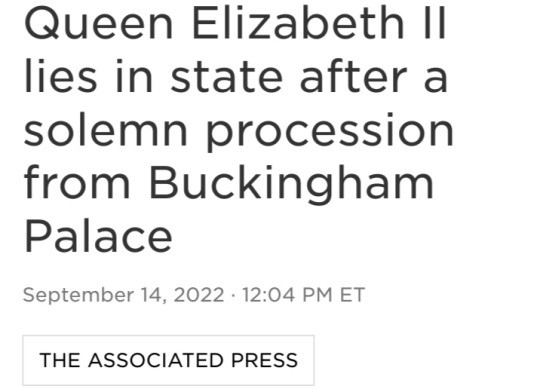
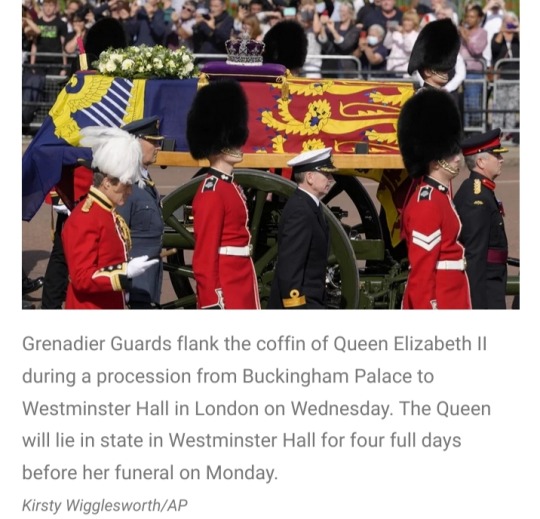
LONDON — The coffin of Queen Elizabeth II left Buckingham Palace for the last time Wednesday, borne on a horse-drawn carriage and saluted by cannons and the tolling of Big Ben, in a solemn procession through the flag-draped, crowd-lined streets of London to Westminster Hall.
There, Britain's longest-serving monarch will lie in state for the world to mourn.
Her son, King Charles III, and his siblings and sons marched behind the coffin, which was topped by a wreath of white roses and her crown resting on a purple velvet pillow.
The queen will lie in state for four days until her funeral Monday, with hundreds of thousands of people expected to file past.
Eight pall bearers carried the oak and lead-lined coffin into Westminster Hall, placing it on a raised platform known as a catafalque.
The military procession from Buckingham Palace was designed to underscore the queen's seven decades as head of state as the national mourning process shifted to the grand boulevards and historic landmarks of the U.K. capital.

Thousands who had waited for hours along The Mall outside the palace and other locations along the route held up phones and cameras, and some wiped away tears, as the procession passed. Applause broke out as the coffin passed through Horse Guards Parade.
The coffin was draped in the Royal Standard and topped with the Imperial State Crown — encrusted with almost 3,000 diamonds — and a bouquet of flowers and plants, including pine from the Balmoral Estate, where Elizabeth died on September 8 at the age of 96.
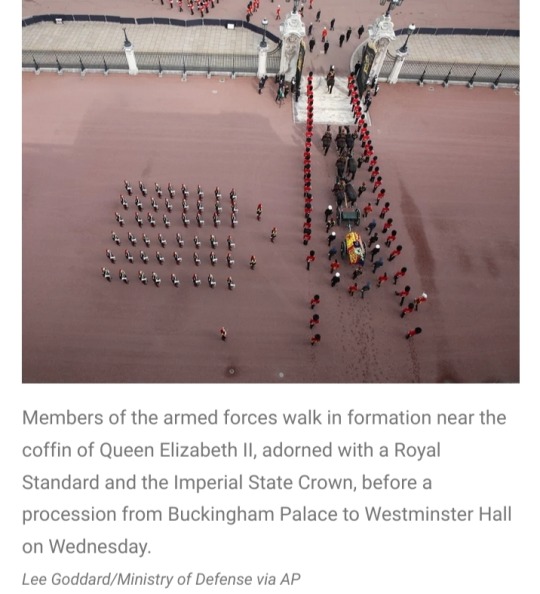
Two officers and 32 troops from the 1st Battalion Grenadier Guards in red uniforms and bearskin hats walked on either side of the gun carriage.
The 38-minute procession ended at Westminster Hall, where Archbishop of Canterbury Justin Welby led a service attended by Charles and other royals.
"Let not your heart be troubled: ye believe in God, believe also in me. In my Father's house are many mansions: if it were not so, I would have told you," Welby read from the Book of John.
Thousands had queued up along the banks of the River Thames, waiting their turn to enter the hall and pay their respects.

The crowds are the latest manifestation of the nationwide outpouring of grief and respect for the only monarch most Britons have ever known after her 70 years on the throne.
Joan Bucklehurst, a 50-year-old retail worker from Cheshire in northwestern England, said the queen "meant so much for everybody."
"She was amazing, yeah," she added, choking up with emotion. "So, we had to be here. We've been here a few times when there have been special occasions, but this one, I couldn't miss this."
Maj. Gen. Christopher Ghika of the Household division, who organized the ceremonial aspects of the queen's funeral, said it was "our last opportunity to do our duty for the queen, and it's our first opportunity to do it for the king, and that makes us all very proud."
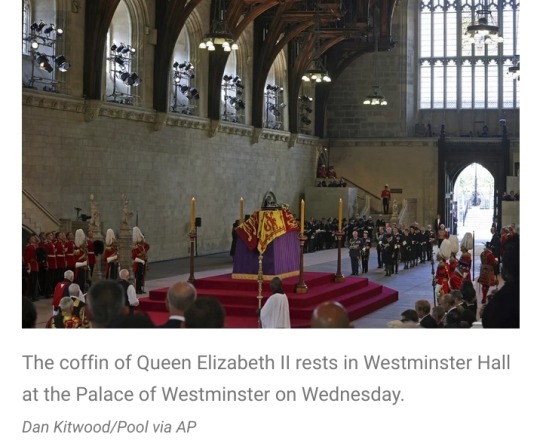
Troops involved in the procession have been preparing since the queen died. So have the horses of the King's Troop Royal Horse Artillery.
Sgt. Tom Jenks, from the King's Troop Royal Horse Artillery, said the horses were specially trained, including how to handle weeping mourners, as well as flowers and flags being tossed in front of the procession.
Heathrow Airport temporarily halted flights, saying it would "ensure silence over central London as the ceremonial procession moves from Buckingham Palace to Westminster Hall."
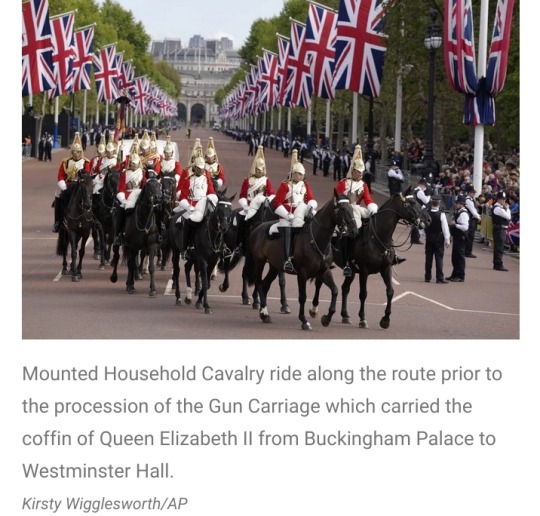
Crowds have lined the route of the queen's coffin whenever it has been moved in its long journey from Scotland to London.
On Tuesday night, thousands braved a typical London drizzle as the hearse, with interior lights illuminating the casket, drove slowly from an air base to Buckingham Palace.

Earlier, in Edinburgh, some 33,000 people filed in silent respect past her coffin as it lay for 24 hours at St. Giles' Cathedral.
Hundreds of thousands are expected to visit the 900-year-old Westminster Hall, the oldest building in Parliament, for four days before her state funeral on Monday.
The hall is where Guy Fawkes and Charles I were tried, where kings and queens hosted magnificent medieval banquets, and where ceremonial addresses were presented to Queen Elizabeth II during her silver, golden and diamond jubilees.
Chris Bond, from Truro in southwest England, was among those lining up along the banks of the River Thames. He also attended the lying in state of the queen's mother in 2002.
"Obviously, it's quite difficult queuing all day long, but when you walk through those doors into Westminster Hall, that marvelous, historic building, there was a great sense of hush and one was told you take as much time as you like, and it's just amazing," he said.
"We know the queen was a good age and she served the country a long time, but we hoped this day would never come," he added.
Chris Imafidon secured the sixth place in the queue.
"I have 1,001 emotions when I see her," he said. "I want to say, God, she was an angel, because she touched many good people and did so many good things."
Edited
#Queen Elizabeth II#Her Majesty The Queen#Buckingham Palace#Westminster Hall#King Charles III#British Royal Family
13 notes
·
View notes
Text
Spring Break!
The three-week class session finished on Thursday, February 16th. I took my exam and then started packing for the break! I left on February 17th and returned on February 26th. The 11-week semester began after the intersession break.
I went to three places during the break, Prague, Edinburgh, and London.
Some highlights from Prague! The currency is called a Czech crown, and one crown equals 0.045 USD. When I paid 200 crowns for my food the first time, I was startled before I converted it. Also, everyone we encountered in restaurants and museums understood English which was nice because I know zero Czech.

The Astronomical Clock! Every hour it has a little show where the skeleton rings the bell and the apostles rotate in the windows at the top.

Some delicious food from a market that we stumbled across by the Lennon Wall.

The Lennon wall is dedicated to John Lennon but is also a place for creative expression.
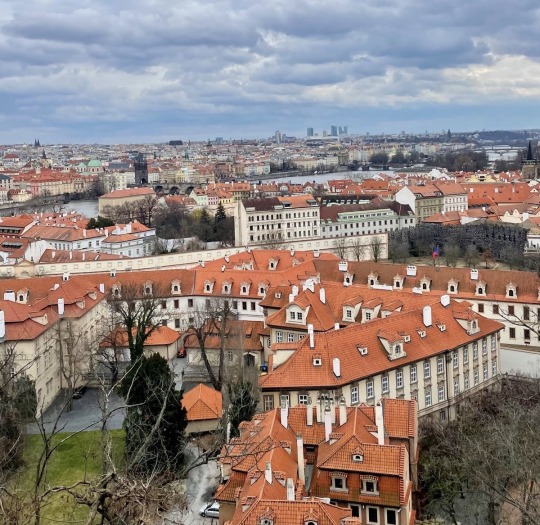
Beautiful view of the city!

We visited the Central Gallery which was a nice change from all the Renaissance art. It features Andy Warhol, Salvador Dali, and Alfons Mucha.

The architecture in Prague is so fun! Very gothic but also lots of pastel colors.

The nightlife in Prague was different from anything I had experienced before. This club has a floor with robot bartenders.
Other highlights from Prague include the chimney cakes, the castle, Charle's Bridge, the Jewish Quarter, the torture museum, and glow-in-the-dark mini-golf!
Next up was Edinburgh! To be honest, it was nice to be in a country that spoke English. The city made me feel like I was back in medieval times. I loved how all the buildings look like castles or like they belong in Harry Potter. The weather fit the moody vibe of the city and was everything I hoped for! Another pro of Edinburgh is that there is a lot to do there for free, such as the National Museum, the Gallery, the Royal Botanical Gardens, and more!

The Edinburgh Castle! It was right across the street from our hostel.

The sunset at Arthur's Seat. This is the best view I have seen so far in my travels.

The landscape in Scotland is spectacular! This is also Arthur's Seat.

The Scottish National Gallery! We saw Scottish Art and many Impressionist works like Degas and Manet.

My traditional dinner is called "stovies." A Scottish dish of tender beef, and root vegetables cooked in a rich gravy, with seasonal carrots and bread.
Other highlights include the Royal Botanical Garden, a Harry Potter walking tour, the National Museum of Scotland, Victoria Street, St. Gile’s Cathedral, the Writer’s Museum, and Calton Hill!
Last but not least, London!

I had to take a basic photo with the iconic red telephone box.

Emma and I toured the Westminster Abbey and saw the tombs of past kings and queens, Sir Isaac Newton, and Charles Darwin.

The Royal Cavalry.
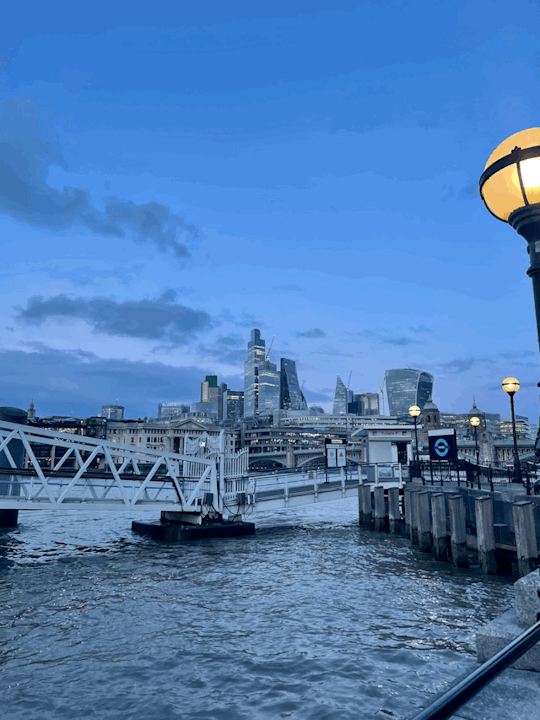
The London skyline in the evening was magical.
Other highlights include a board game cafe, Big Ben, Victoria and Albert Museum, the Tate museum, the National Gallery, Buckingham Palace, Neal’s yard, and Chinatown. London did feel the most like the United States, which I was expecting, but it was still different in ways. Emma and I even ate lunch at Five Guys one day, and it was nice to have a taste of home.
For the trip, we flew on budget airlines like EasyJet and Ryanair. I lived out of my travel backpack for ten days. It was heavy but doable. I just had to re-wear clothes. We stayed in an Airbnb in Prague because it was so cheap, then hostels in Edinburgh and London.
I had such an amazing time during the break, but I will say that by the end of it, I was feeling tired. Ten days was the perfect amount of time. If the trip was any longer I don’t think I would have enjoyed myself as much.
I highly recommend going to all of these places!!
6 notes
·
View notes
Photo
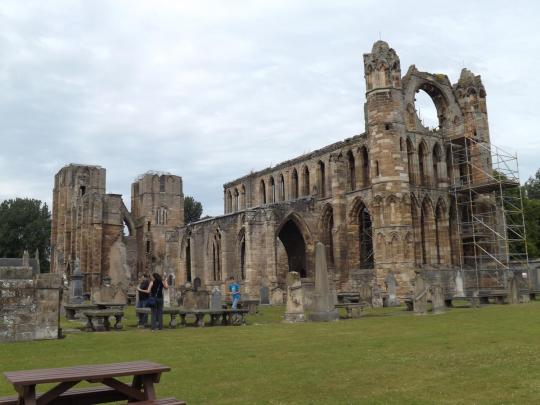


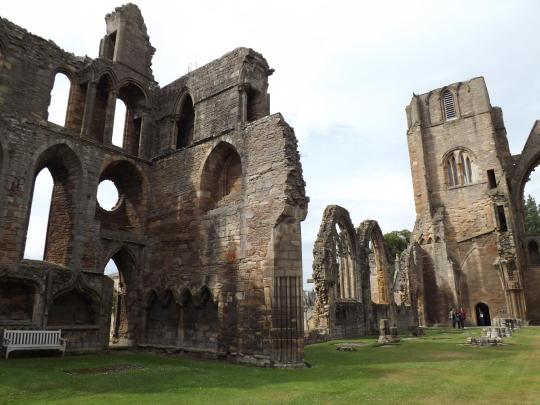


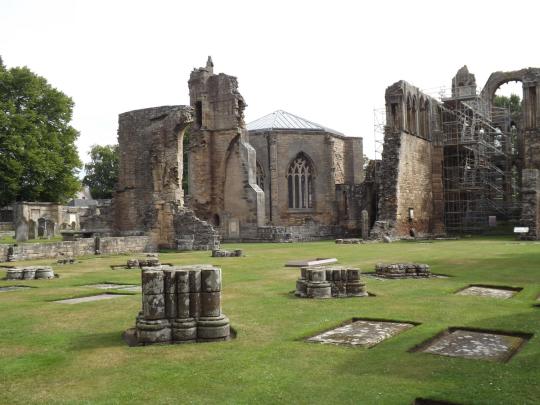
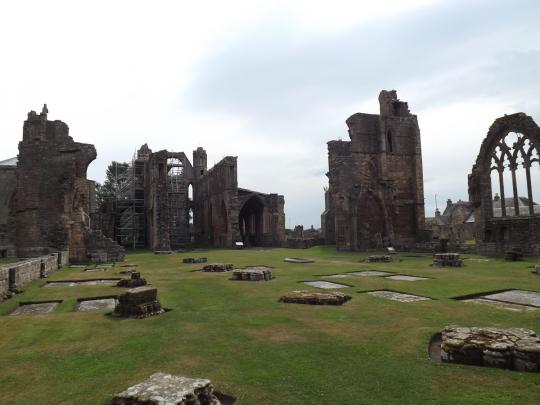
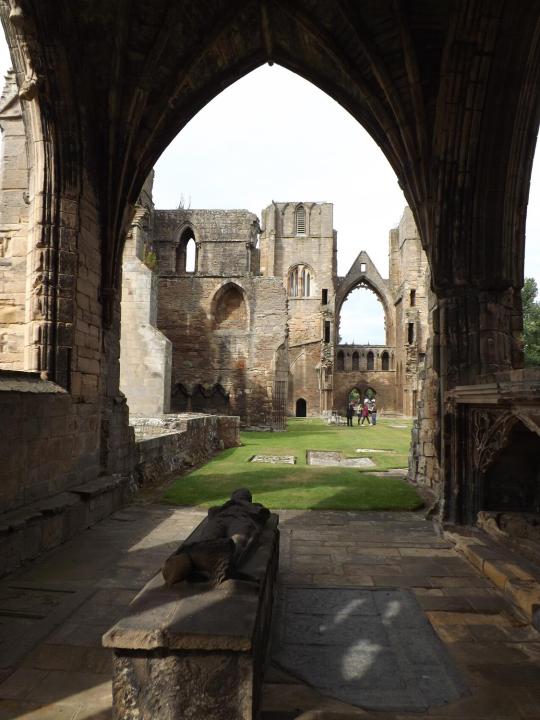
I spent last night in a hotel in Inverness and, this morning, headed east along the Moray coast to Elgin, because I felt like visiting the ruins of Elgin Cathedral, which I’ve driven past many a time but never stopped for a look.
As the Church of Scotland is a Presbyterian denomination and doesn’t have bishops, a lot of churches in Scotland that are called cathedrals (St Giles’, Dornoch and Dunblane to name a few) are not technically cathedrals any more. Elgin was once the seat of the Bishop of Moray (that’s pronounced like ‘Murray’, btw, not like the eel), so was, indeed, a cathedral. Of course, now it’s not even really a church any more; unlike a lot of its cousins which continued as parish churches with a new coat of paint, it fell first into disuse and then disrepair following the Reformation, starting with the removal of the lead from the roofs for... reasons? and culminating in the collapse of the central tower that, while the two western towers remained relatively intact, took most of the nave with it.
But hot damn! What a beautiful corpse.
7 notes
·
View notes
Note
(To the "I wish you would write a fic where...") : This isn't much of a summary, but I'd love a sequel (or any short thing) that checks back in on the Cadfael/X-men world! You got me into the Cadfael books and show with that fic. :)
I'm glad I suckered you into the wonderful world of Cadfael! It's not perfect, but it's absolutely a comfort universe for me, I've reread the books more times than I can count. <3
As for a sequel...look, let's be real, that fic was a monster to write, and at the same time, by the time I finished writing it I already knew which book's mystery I would 100% borrow for a followup fic. I just don't have that level of plotting in me these days (and I've uh sidestepped out of the X-Men fandom for the time being). And I would need to crack the glaring problem of having a telepath as your de facto detective. Like, I got through it the first time by having Erik and Charles work at cross purposes for a while, and deliberately keep secrets from one another. And inventing from wholecloth the idea that Gambit's powers make him tricky for Charles to read. Once they're on the same team, I don't know how the hell I sustain ANY level of mystery.
(There's a reason why nearly every X-Men movie knocks Professor X out of play at around the midway point of the film. He's too damn powerful otherwise. First Class is pretty much the only one that DOESN'T, and that's where Shaw's helmet comes in.)
But anyway, if you know the books/show, the sequel I will never write would loosely combine the plotline of "St Peter's Fair" with the character dynamics of "The Leper of St Giles", featuring Rogue as the central ingenue-type character. Maybe someday.
2 notes
·
View notes
Text

St Giles Crown Spire.
The Crown Spire of St Giles’ is arguably one of the most distinct structures in the Edinburgh skyline. The steeple an open structure comprising eight flying buttresses meeting to support the central pinnacle.
The high kirk, or church, of the ancient burgh of Edinburgh, to give the building it's correct name, is dedicated to St Giles, the patron saint of the city. Although established in the 12th century most of what is visible externally today only dates from the 19th century.
The exception is this fine crown spire which originally dates from the 1460s with repairs and alterations done about 200 years later in 1653.
In 2020 the tree-rings of the spire’s supporting timbers were analysed showing that the timbers used had been felled in the winters of 1453/54 and 1459/60. These were ancient oaks from one of Scotland’s last remaining native forests; the Royal Forest of Darnaway in Morayshire. That's some distance to come, it's over three hours in a car on modern roads, it must have been some journey heading south. The forest is just south east of Nairn.
Additionally, the Kirk’s earliest bells (since melted and recast) also dated from the 1450s and 1460s showing that an important period of building was taking place at this time. This would have coincided with St Giles Cathedral being given collegiate status by the Pope in 1466.
The crown spire is so called because its 8 flying buttresses, which spring from the corners of the tower and the centre of its sides, intersect to form the shape of an imperial crown. At the time this type of spire was a hugely significant and grand political statement. This was because they were a symbol of royal power rather than religious power as they represented the fact that the king held unrivalled sovereignty within his realm.
The symbol of the crown spire was recognised across Europe and signified the beginning of the end of the united Christendom of previous centuries.
There were rooftop tours for a time, but I have not heard of them restarting these since the pandemic. St Giles is definitely worth a visit but not next week as it is closed due to the sausage fingered big eared guy coming to Edinburgh.
43 notes
·
View notes
Text
#architecture#amazingarchitecture#design#interiordesign#architect#archilovers#luxury#photooftheday#travel#architecturephotography
0 notes
Text
St. Giles Cathedral, Edinburgh, Scotland
1. Why I Chose St. Giles Cathedral: I selected St. Giles Cathedral because of its historical significance and stunning architecture. Its place as a central landmark in Edinburgh and its ties to Scotland's religious history intrigued me.
2. Connection to the Reformation: St. Giles Cathedral played a significant role during the Scottish Reformation in the 16th century. It served as a focal point for reformers, including John Knox, who preached here, influencing Scotland's shift from Catholicism to Protestantism.

4. Surprising Element: One surprising element was discovering the Thistle Chapel inside the cathedral. The intricately carved woodwork and stunning stained glass were unexpected treasures within the cathedral, showcasing exquisite craftsmanship and attention to detail.
5. Reflection: Visiting St. Giles Cathedral gave me a deeper understanding of its significance during the Reformation in Scotland. Learning about its connection to historical figures and witnessing its architecture highlighted its role in Scottish history and culture.
0 notes
Text
St. Giles Cathedral
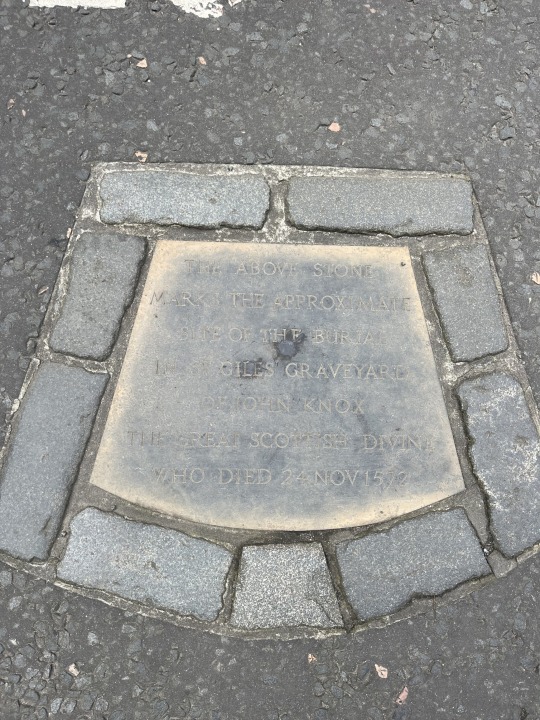
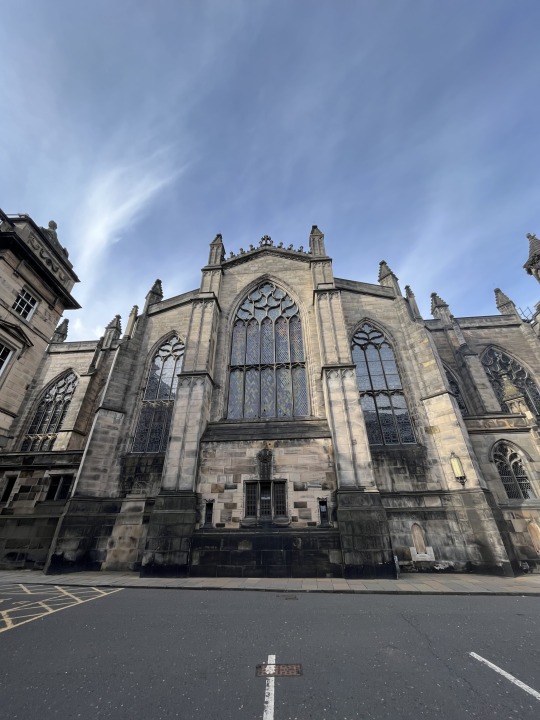

The images above show St. Giles Cathedral in Edinburgh, Scotland. It was founded in 1124 by King David I and is still an active church. I chose this place because I found its location to be interesting. The Cathedral is located directly on the Royal Mile, as it is identified by the Royal Commission on the Ancient and Historical Monuments of Scotland as the "central focus of the old town." The building is hard to miss, and I find it fascinating that an important piece of the Reformation is prominently seen and accessible by millions of people every year.
St. Giles Cathedral is a very important part of the Scottish Reformation. It was formerly a Catholic church, but during the Reformation, the cathedral turned Protestant. John Knox became the minister of the church and helped to lead the Reformation and the church in Scotland. Although it was once reconsecrated as Catholic, it returned to Protestantism and continued to be led by Knox.
One element that surprised me was that John Knox's grave was untouched right behind the cathedral. Although the cemetery that used to be there is now a parking lot, his grave was not covered. Our tour guide said this may have been because they did not want to move him away from his church. This shows his significant impact on the church in Edinburgh and the Reformation because they did not treat his body as they did any other in the same cemetery.
0 notes
Video
Queen Elizabeth II’s coffin is leaving the Palace of Holyroodhouse for St Giles’ Cathedral.
The National Anthem sounds as Her late Majesty is carried to the hearse. -- Royal Central
100 notes
·
View notes
Text
Culture - 19th century

Victorian England
The Victorian era was conjures up images of Gothic Revival architecture, jewel tones, and decorative motifs. It was a period that revisited medieval sensibilities while also embracing the Industrial Revolution. The name of 1800s England derived from Queen Victoria's reign from 1837 until 1901. The people of the Victorian England experienced with many changes with a rapidly expanding economy and innovation. During the Victorian era, England was the most powerful country in the world with the Queen Victorian becoming Empress of India in 1876. India was considered the crown jewel of the British Empire. However, despite these advances, inequalities grew in England and around the world.
Cultural and Scientific Development of Victorian England
Historical events in the 1800s in England include the Industrial Revolution, which created unparalleled economic and industrial centers, such as London and Birmingham. For example, people found work in textile factories, coal mines, and canneries. These new manufacturing processes gave society their first taste of mass production, which largely provided abundance through worker exploitation.
what was life like in Victorian London
The Victorian Era, named after the Queen Victoria, saw the end of rural like as people moved to cities in search of better opportunities. By the mid century, half of England's populations resided in London. Nineteenth century London became the literal and figurative capital of Europe and one of the most important cities in the world of history. People grew wealthy through the ownership of industry, medicines, and the practice of law. The ultra wealthy minority made their fortune through land ownership and rent. The homes of the wealthy were grand structures with Gothic influences, such as stained glass, turrets and towers. They featured intricate exterior woodwork and lush interior design.
Despite the promise of a better life, the rate of poverty increased tremendously. Many people saw their dreams turns into nightmare as they struggled to maintained the bare minimum. Stable, well-paying work was hard to find and pollution skyrocketed, leaving many families are hungry and dirty and getting sick. Typhoid and cholera spread through contaminated water due to poor sanitation. The most notorious slum, st Giles, was filthy both physically and spiritually. Situated in central London, this part of town suffered from unregulated prostitution, liquor shops, criminal hideouts and horrible overcrowding.
0 notes